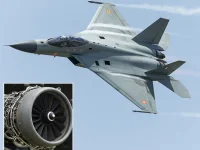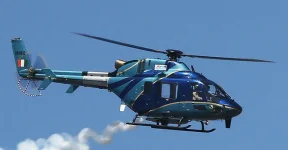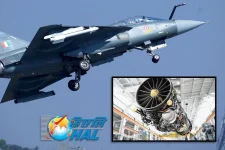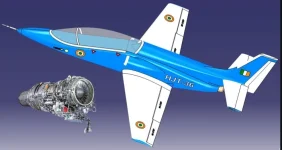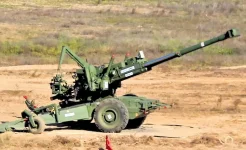- Views: 3K
- Replies: 5
India's flagship light tank program, named Zorawar, is set to achieve a major milestone as its second prototype is scheduled for rollout by September 2025.
This development, a joint effort between the Defence Research and Development Organisation (DRDO) and private industry leader Larsen & Toubro (L&T), marks a critical step in accelerating the tank's induction into the Indian Army.
The project aims to significantly enhance India's armoured defence capabilities in high-altitude regions, particularly along the Line of Actual Control (LAC) with China.
The strategic need for a specialised light tank was highlighted during the 2020 military standoff in Eastern Ladakh, where the Indian Army's heavier main battle tanks, such as the T-72 and T-90, faced mobility challenges in the rugged, high-altitude terrain.
In response, the Zorawar project was launched to develop an agile, 25-tonne armoured vehicle specifically designed for these conditions.
The tank is named after General Zorawar Singh, a 19th-century commander renowned for his successful military campaigns in the Himalayas, reflecting its intended operational environment.
The first prototype of the Zorawar was unveiled in July 2024 and has already completed a series of demanding internal trials.
These tests successfully validated its performance in diverse environments, from the deserts of Rajasthan to the harsh, sub-zero conditions of Ladakh in December 2024. During these evaluations, the tank demonstrated excellent mobility on steep gradients and its amphibious capability in water obstacles.
Its 105mm main gun, fitted on a Belgian-designed Cockerill turret, also proved highly effective, achieving a high probability of hitting targets on the first shot.
Building on the success of the initial model, the second prototype will feature several key upgrades based on feedback from the Army and data from internal tests.
These enhancements reportedly include a refined suspension system for smoother movement over rough terrain and an improved engine cooling system to ensure optimal performance in the thin air of high altitudes.
Additional sensors are also being integrated to provide the crew with superior situational awareness, further boosting the tank's overall combat effectiveness.
A significant aspect of the Zorawar's development has been its powertrain. The tank is currently equipped with a 760 horsepower Cummins engine, which provides an excellent power-to-weight ratio of 30 hp/tonne, crucial for agility. This engine was selected after delays in the delivery of a German-made engine due to strict export regulations.
Looking ahead, the Ministry of Defence plans to upgrade production models with the even more powerful 1,000 hp Cummins Advanced Combat Engine (ACE). In line with the government's 'Atmanirbhar Bharat' initiative, the DRDO is also developing an indigenous 700 hp engine for future batches.
The Zorawar is armed with a formidable array of weaponry.
Its main 105mm gun is capable of firing anti-tank guided missiles (ATGMs) in addition to conventional shells. This firepower is complemented by a remote-controlled 12.7mm machine gun and advanced sighting systems for accurate targeting.
For its own protection, the tank features modular armour, a low-profile design to reduce detection, and an active protection system (APS) to intercept incoming projectiles, enhancing its survivability on the battlefield.
With the first prototype now ready for formal user trials by the Indian Army, the next phase is set to begin in August 2025. These trials will last approximately 12 to 18 months, covering all seasons to ensure the tank's reliability in extreme weather.
The Indian Army has placed an initial order for 59 Zorawar tanks, which will be manufactured by L&T. The total requirement stands at 354 units, a contract valued at around ₹17,500 crore (US$2.1 billion).
The timely rollout of the second prototype will allow the Army to conduct comparative evaluations and finalise the design before large-scale production begins.
The DRDO aims to have the first regiments of the Zorawar tank inducted and operationally deployed by 2027.
Its capability of being airlifted by the Indian Air Force ensures it can be rapidly deployed to remote and contested territories, providing the Indian Army with a vital and flexible asset for mountain warfare.

